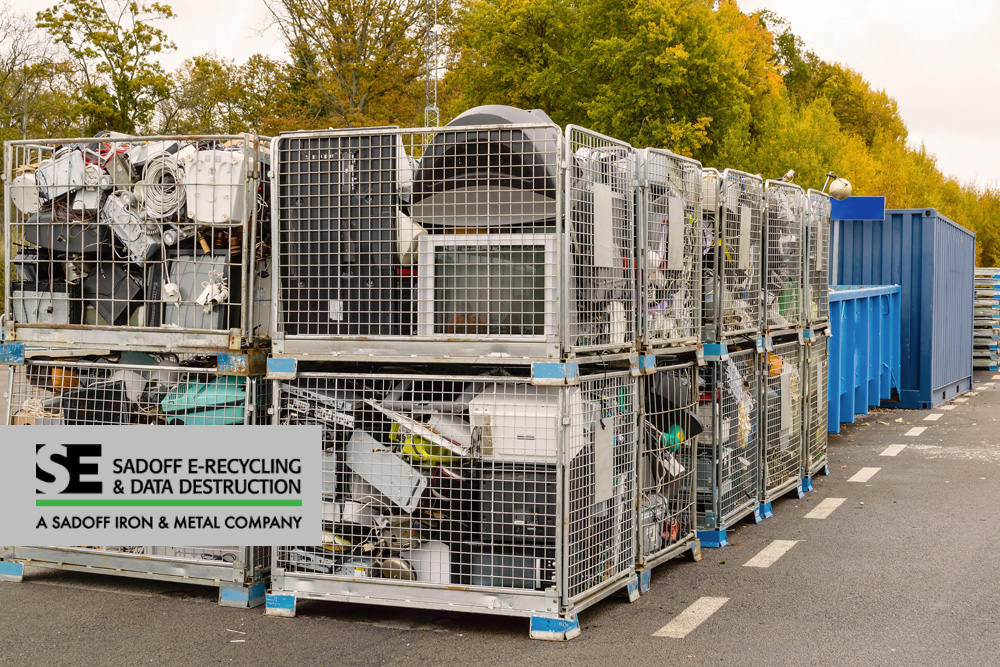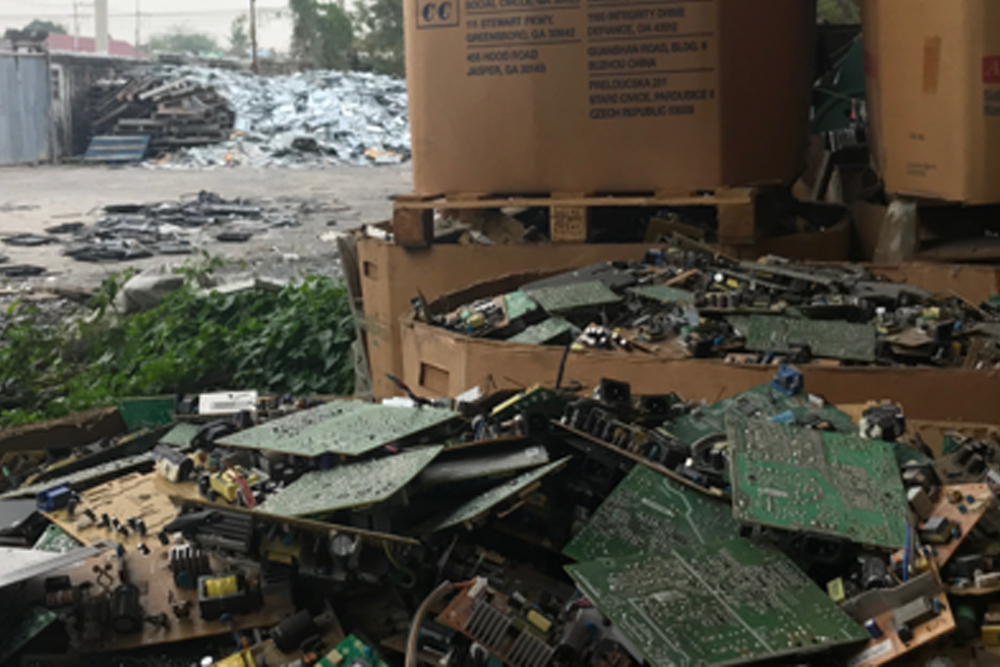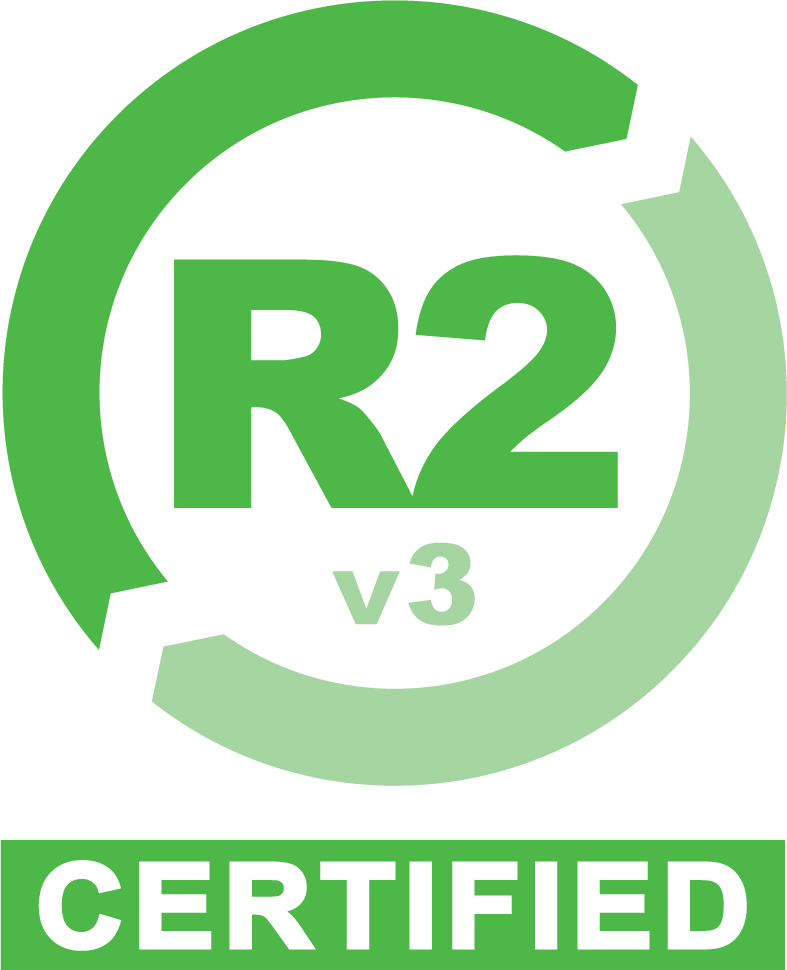Tracked: The Truth about E-Waste and its Consequences
 1
1 Apr
Properly disposing of e-waste can be a challenge—it’s hard to know where to go, what materials are accepted, and whether your data will remain secure in the process. But what really happens when you finally dispose of it?
Last month, the Basel Action Network (BAN) Watchdog Group published the results of a study looking into this question. They conducted the study as part of their e-Trash Transparency Project, a project dedicated to preventing scam recycling and finding out where electronics end up at the end of their life.
As part of the study, BAN secretly installed GPS tracking devices on old electronics and delivered them to common e-waste disposal sites (most of which were government-approved) in 10 different countries. The results were harrowing: the study revealed that significant amounts of e-waste were exported (often illegally) to other countries, and disposed of using substandard, illegal, and even dangerous practices.
Such practices can have serious consequences, from pollution and endangering the environment to jeopardizing the physical health of workers involved in the operations. While this study focused on countries belonging to the EU, since the U.S. is a leading producer of e-waste and is estimated to be shipping at least half of its electronic waste overseas, it’s especially important to prevent these operations from happening here.
The Report: Specifics

BAN initiated the study on Waste from Electrical and Electronic Equipment (WEEE) in 2017, fitting hidden GPS trackers on 314 used electronic devices and dropping them off at common disposal sites for electronics. The items tracked included LCD and CRT monitors, desktop personal computers, and printers. All qualified as hazardous material by the Basel Convention definitions, as some items included mercury, high levels of led, tin, and brominated flame retardants.
The study found that several of the items (19 of the 314) were exported to other countries, with over half of the items going to developing countries such as Nigeria, Ukraine, and Thailand. On average, the items ended up traveling 78,408 kilometers (or about 48,720 miles) from where they were deployed.
While 19 items may seem like an insignificant number, BAN estimates that if we take this number as representative of national export rates (from just the 10 countries studied), those 19 items could represent as much as 421,603 tons of e-waste—that’s enough to fill 16,821 shipping containers with e-waste. To put it in perspective, BAN writes that if each of those containers were loaded onto an 18-wheel truck, the trucks, when lined up back-to-back, would stretch 387 kilometers—that’s 240 miles of shipping containers full of e-waste (and again, that’s only from 10 relatively small countries).
To add insult to injury, the items were found to be shipped to countries with a lack of proper waste management, resulting in the open burning of several of the items, which could result in human exposure and air pollution, as well as contamination to local crops by highly-toxic materials.
The EU isn’t the only contributor to exports of e-waste and environmentally-unfriendly practices, though. In fact, in 2017, the U.N. estimated that the United States collected 1.4 million tons of e-waste in 2016, the whereabouts of which is unknown. And, according to BAN, 40 percent of e-waste from the U.S., Canada, and Europe was sent to Asia in 2018. The report thus draws attention to a significant issue and calls for measures on a global scale to help solve the problem.
What it Means for You

(Image credit: Holes in the Circular Economy Report, BAN, 2018)
BAN’s report revealed a grave concern for all countries producing e-waste and showed that even e-recycling companies often contribute to these exports, thereby contributing to the negative consequences that are a result of these practices. That means that as a business or organization, it could be challenging for you to find an e-recycler you can trust not to export electronics or improperly dispose of them. You’ll need to research how to properly discard electronics and where to locate an honest, responsible e-recycling partner that engages in sustainable recycling practices.
The report also raises concerns about data security. When electronics are sent to landfills or overseas, the data on those electronics is unprotected and can be easily hacked or stolen. That means you’ll need to ensure that your e-recycling partner meets the National Institute of Standards and Technology (NIST) standards so your data remains safe.
What You Can Do
Making sure you properly dispose of electronics is the best way to help curb the problem. Familiarizing yourself with materials you can’t just throw out is important, as businesses and organizations can face fines for improper disposal of electronics. You’ll also want to utilize a local, experienced recycler that does not ship e-waste overseas and adheres to the National Association for Information Destruction’s (NAID) requirements.
Sadoff E-Recycling & Data Destruction serves several industries and can recycle industry-specific items such as military or government equipment, as well as common items such as printers, TVs and computers, batteries, and phones. By using our proven, sustainable process, you can rest assured your electronics are recycled in a safe environment that follows best practices for disposing e-waste. Sadoff E-Recycling & Data Destruction never ships e-waste overseas and strongly believes in environmental responsibility on a local and global scale.
Sadoff E-Recycling & Data Destruction also cares about data security during the electronics recycling process. We ensure your data remains secure by offering data destruction solutions so you can have peace of mind when disposing of your company’s electronics. Contact us to find out more about how we can help your company properly and securely recycle your electronics.
Tags: computer monitor recycling, e-recycling, e-waste, electronics recycling, how to dispose electronics, how to recycle a tv, sustainabilityCategorized in: E-Recycle, Sustainability

 Google map directions
Google map directions
 Google map directions
Google map directions
 Google map directions
Google map directions
 Google map directions
Google map directions
 Google map directions
Google map directions
 Google map directions
Google map directions
 Google map directions
Google map directions
